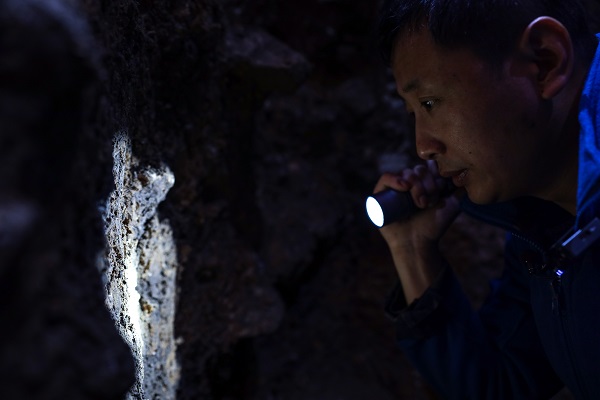Rocks and a charred place

Zhang Xinglong, the deputy director of Guizhou Provincial Institute of Cultural Relics and Archaeology and the leading scholar at the Zhaoguodong site, examines rocks in the cave on April 16. [Photo provided to China Daily]
Follow-up research in the lab has analyzed their potential diet. Grapes and kiwi fruits appeared on dining tables between 12,000 and 16,000 years ago, and as many as 25 varieties of animals once fed these cavemen, according to research by Chengdu Cultural Relics and Archaeology Research Institute in Sichuan province.
"The era of Zhaoguodong as a settlement site was a key time in the formation of agriculture," says Jiang Ming, a researcher from the Chengdu institute. "The discovered plant seeds indicate early-stage cultivation of crops, but we still need more clues."
Only a 70-square-meter area out of the total 200 within the cave has been unearthed, but, currently, there is no further excavation plan. As Zhang says, on one hand, it leaves larger room for archaeologists in the future to try new research methods, and on the other, it allows us to focus on all the work that needs to be done in the laboratory on the relics that we have already uncovered, such as getting samples of human DNA from the tombs for comparative studies.
Presented by China Daily.
黔ICP备05001922号
All Rights Reserved.
Presented by China Daily.
黔ICP备05001922号



